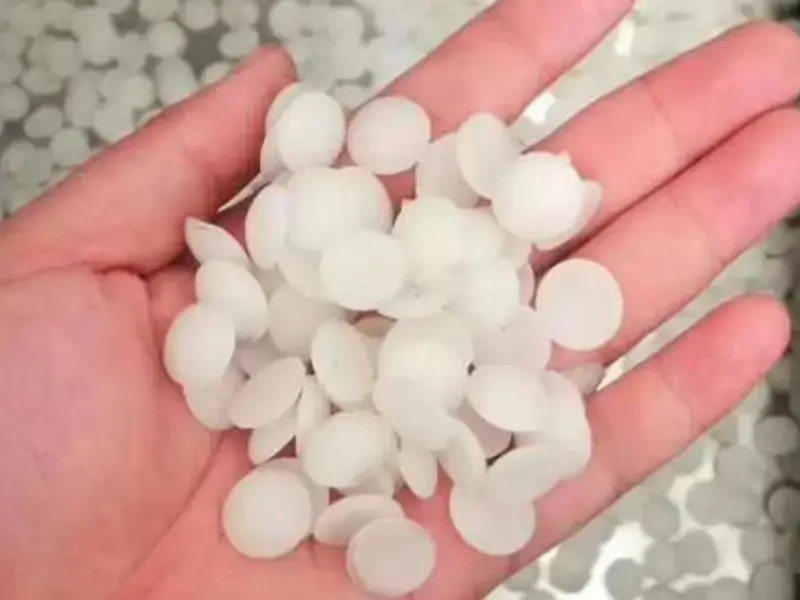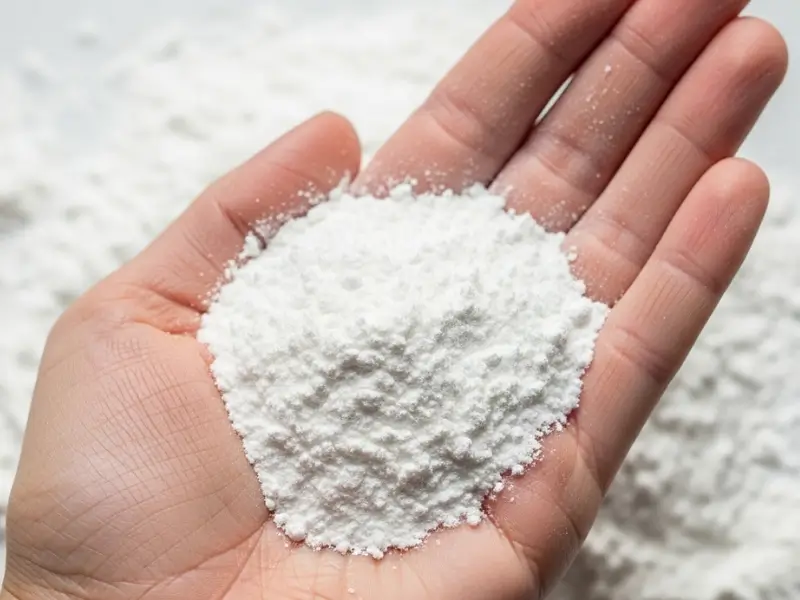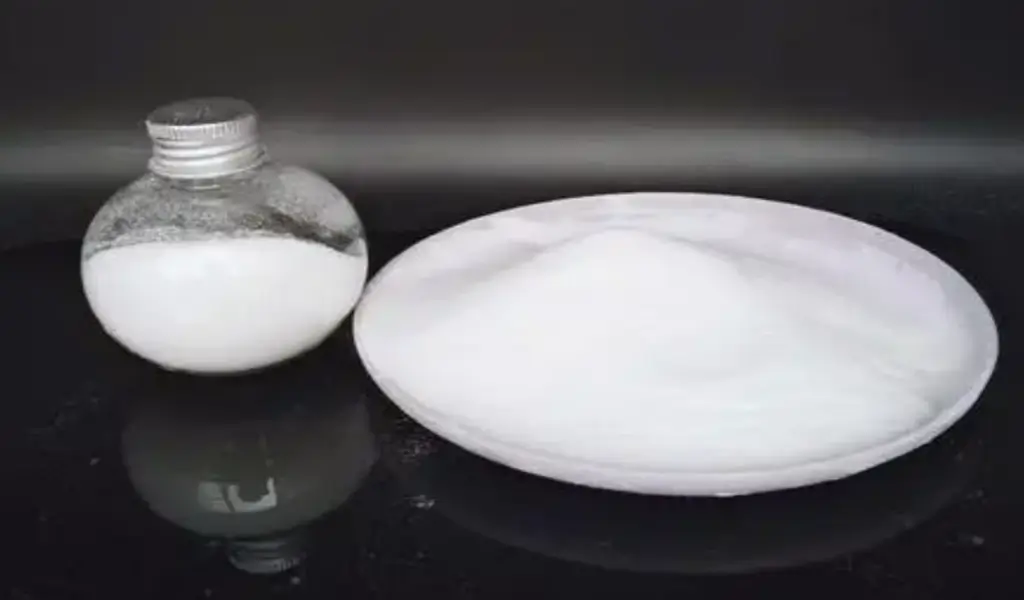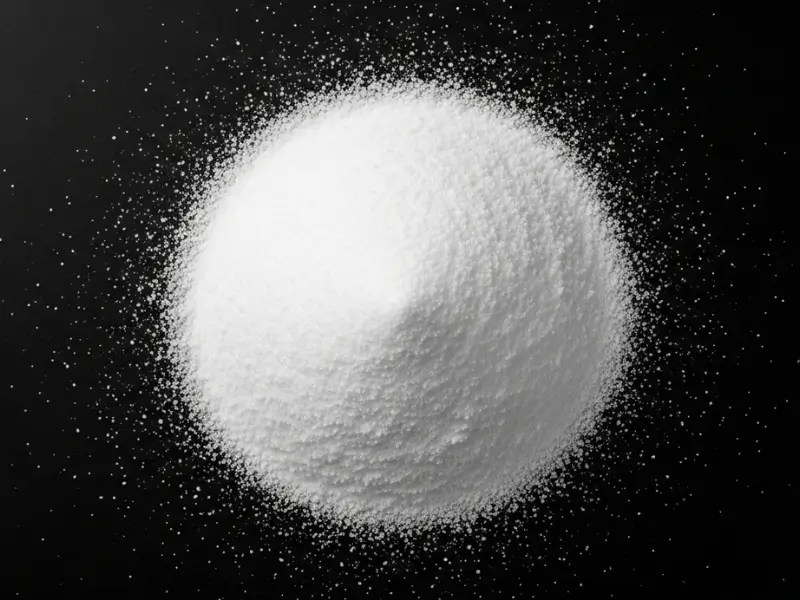Evaluate CPVC manufacturers based on product quality, heat resistance, certifications, delivery reliability, and technical support. Prioritize those with consistent supply, competitive pricing, and proven industry experience. Always request samples and verify compliance with application before bulk purchasing.
1. Introduction to CPVC Manufacturing
Let’s start with the basics: CPVC manufacturing is an intricate process that combines chemistry and technology to create durable materials suited for various applications. CPVC is derived from PVC, yet it undergoes further chlorination, allowing it to withstand higher temperatures and exhibit better chemical resistance. This added resilience makes it a preferred choice in plumbing and industrial settings.
But here’s the kicker: The CPVC market has expanded significantly, prompting numerous manufacturers to emerge, each offering distinct products and features. Understanding the fundamentals of CPVC manufacturing can empower buyers to navigate this extensive marketplace. The production of CPVC involves several crucial steps, including polymerization, chlorination, and finally, extrusion into pipes or fittings. Each step requires precision and adherence to quality standards to ensure the integrity of the final product.
As the demand for CPVC continues to grow, so does the complexity of choosing the right manufacturer. Buyers must weigh several factors, including quality, compliance with industry standards, and environmental considerations. Understanding these factors can significantly influence the outcome of construction projects and the efficiency of operational systems.
| Aspect | Details | Significance |
|---|---|---|
| Definition of CPVC | Chlorinated polyvinyl chloride | Durable, heat-resistant thermoplastic |
| Manufacturing Process | Polymerization and chlorination | Ensures product quality |
| Market Growth | Rising demand in various sectors | More manufacturers entering the market |
2. Understanding CPVC Material Properties
What makes CPVC so special? When it comes to material properties, CPVC stands out due to several key characteristics. First, its excellent chemical resistance allows it to handle a wide range of substances without degrading. This makes it suitable for applications in chemical manufacturing, pharmaceuticals, and even food processing.
Let’s delve deeper: CPVC can withstand higher temperatures than standard PVC, making it ideal for hot water applications. Its operating temperature can reach as high as 200°F, which is invaluable in environments where thermal stability is paramount. Additionally, its low thermal conductivity and flame resistance are critical features that contribute to safety in various installations.
CPVC is also lightweight, which translates to easier handling during installation. Its flexibility allows for easier routing in complex systems, ultimately leading to reduced installation costs. However, manufacturers must ensure that these properties meet industry standards to guarantee performance over time.
The implications of these properties extend beyond the individual materials. When teams select CPVC, they often benefit from lower maintenance costs, longer product lifespans, and increased reliability. By understanding CPVC’s properties, professionals can make educated choices for their specific applications.
| Property | Value | Benefits |
|---|---|---|
| Chemical Resistance | High | Suitable for various corrosive environments |
| Maximum Temperature | Up to 200°F | Ideal for hot water applications |
| Lightweight and Flexible | Low density | Easier handling and installation |
3. Top CPVC Manufacturers in the Industry
Let’s take a look at who’s leading the charge: When it comes to CPVC manufacturing, several prominent players have earned their reputation by delivering quality and innovation. Some top manufacturers includeNIBCO, Charlotte Pipe, and DXDGroup. These companies have established themselves as industry leaders due not only to their product quality but also their extensive range of offerings, including different pipe sizes, fittings, and accessories.
What’s the real story? Each of these manufacturers brings something unique to the market. For instance,NIBCO has been long-respected in the plumbing industry for its reliable fittings and joints, emphasizing the need for durability and efficiency. Charlotte Pipe, on the other hand, is renowned for its extensive catalog of CPVC products, providing a comprehensive solution for various plumbing applications.
And let’s not overlook DXDGroup, which specializes in CPVC materials and offers professional technical guidance and formulations tailored to factory needs. This allows manufacturers to receive precise solutions that enhance product quality and performance, further expanding their capabilities in the market.
This competitive landscape means buyers have many options, and it’s crucial to evaluate manufacturers based on their specific strengths, such as quality certifications, customer service, and the breadth of their product lines. Understanding the inventory and capabilities of these top manufacturers enables stakeholders to select a supplier that aligns with their specific needs and project requirements.
| Manufacturer | Strengths | Type of Products |
|---|---|---|
| DXDGROUP | Eco-friendly options | CPVC materials, custom solutions |
| NIBCO | Reliable durable products | Valves, fittings, pipe systems |
| Charlotte Pipe | Extensive product catalog | CPVC pipes, fittings, and accessories |
4. Factors to Consider When Choosing CPVC Manufacturers
What should you keep in mind? Selecting the right CPVC manufacturer involves careful consideration of several factors to ensure the best fit for your application. First on the list is quality assurance, which refers to the manufacturer’s adherence to industry and safety standards. Manufacturers should be compliant with standards set by organizations such as ASTM and NSF, which indicate the reliability and safety of their products.
Let’s break it down further: The production capacity and lead times are also critical factors. A manufacturer that can quickly fulfill orders is essential for maintaining project timelines. Understanding their production capabilities and whether they can handle your project’s scale is crucial to ensure smooth operations.
Additionally, pricing and value should enter the equation. While it might be tempting to opt for the lowest-cost option, it’s essential to assess the overall value, which includes quality, durability, and warranty provisions. After all, an upfront saving might lead to higher maintenance or replacement costs down the line.
Evaluating these factors provides a clear view of potential manufacturers. Engage in conversations with representatives, request quotes, and even visit their facilities if possible, as these actions can offer additional insights into their capabilities and reliability.
| Factor | Considerations | Importance |
|---|---|---|
| Quality Assurance | Compliance with ASTM, NSF, etc. | Guarantees safety and durability |
| Production Capacity | Lead times and ability to meet demand | Maintains project timelines |
| Pricing | Cost vs. value analysis | Ensures long-term investment benefits |
5. The Importance of Compliance and Standards
Let’s discuss the nitty-gritty: Compliance and standards are non-negotiable in the CPVC manufacturing process. Compliance with national and international safety standards ensures that products are tested for quality and performance, adhering to the necessary regulations. For example, the American Society for Testing and Materials (ASTM) provides standards that guide manufacturers in creating reliable and consistent CPVC products.
What happens when compliance is ignored? Companies that fail to meet these standards risk both legal liabilities and damage to their reputation. This underlines the necessity for manufacturers to not just claim compliance but to maintain rigorous testing and quality assurance practices.
In addition to ASTM, the NSF certification is particularly important for products that come into contact with drinking water. NSF standards are recognized globally, and having this certification can open doors to wider markets and increased customer trust. Buyers should always examine a manufacturer’s compliance certifications to ensure the products meet necessary safety and health standards.
In summary, understanding the role of compliance and industry standards is essential for making informed decisions about CPVC manufacturers. This awareness ultimately safeguards the integrity of your projects.
| Standard | Description | Importance |
|---|---|---|
| ASTM | Set of standards for material testing | Guarantees reliability and safety |
| NSF | Certification for safety in water | Ensures compliance with public health |
| ISO | International Organization for Standardization | Enhances product consistency and quality |
6. Custom Solutions from CPVC Manufacturers
What about customization? The ability to receive custom solutions from CPVC manufacturers can significantly enhance project outcomes. Many manufacturers offer tailored services to meet specific project requirements, such as unique sizes, fittings, and specialized formulations. This customization can prove invaluable in complex installations where standard offerings may not suffice.
Let’s explore this further: For instance, a manufacturer might provide CPVC with added additives to enhance UV resistance for outdoor applications or custom fittings that match the specific needs of an industrial system. Some manufacturers may even work directly with clients to design products that are engineered to fit precise engineering specifications, providing a unique competitive advantage.
Moreover, the importance of flexibility in manufacturing cannot be overstated. It enables clients to optimize their projects effectively, ensuring that materials perform exactly as required in challenging environments. The collaboration between manufacturers and clients to create these custom solutions fosters innovation and efficiency.
Ultimately, the focus on custom solutions not only addresses specific needs but also positions manufacturers favorably in the marketplace, as they can provide unique products that differentiates them from competitors.
| Customization Type | Description | Benefits |
|---|---|---|
| Specialized Formulations | Custom additives for specific needs | Enhanced performance in unique conditions |
| Unique Sizes and Fittings | Tailored solutions for specific projects | Optimized installations |
| Collaboration with Clients | Joint ventures for product design | Increased innovation and efficiency |
7. Sustainability Practices Among CPVC Manufacturers
Let’s get greener: Sustainability is becoming increasingly important in the CPVC manufacturing sector. As environmental concerns grow, manufacturers are adopting eco-friendly practices. For instance, many companies are focusing on reducing waste during production while others are incorporating recycled materials in their CPVC products.
What’s the takeaway? A commitment to sustainability can lead to better brand reputation, attract environmentally conscious clients, and, ultimately, better profitability. By leveraging sustainable practices, manufacturers can differentiate themselves in a competitive marketplace while appealing to a broader audience.
Examples of sustainability in CPVC production include the use of energy-efficient processes, minimization of emissions, and initiatives aimed at recycling used CPVC products. Many manufacturers are working on methods to ensure their products are recyclable at the end of their lifecycle, which helps reduce landfill waste.
As awareness of environmental issues continues to rise, choosing manufacturers that prioritize sustainability can become a critical factor in procurement decisions. Stakeholders should actively look for partners who are not only committed to quality and performance but also to leaving a smaller ecological footprint.
| Sustainability Practice | Description | Impact |
|---|---|---|
| Waste Reduction | Minimizing labor and material waste | Lower production costs |
| Use of Recycled Materials | Incorporating previous CPVC products | Reduces landfill waste |
| Energy-efficient Processes | Eco-friendly production methods | Enhances sustainability reputation |
8. Technological Innovations in CPVC Manufacturing
Are you ready for technological advancements? The CPVC manufacturing landscape is evolving rapidly due to technological innovations. Notably, advancements in production techniques have led to more efficient manufacturing processes, resulting in higher quality products and reduced costs.
Let’s explore the details: For example, the use of automation in manufacturing lines has allowed for greater precision and consistency, reducing human error and increasing output. Many manufacturers have introduced computer numerical control (CNC) machinery, enabling them to create highly customized products with less waste.
Moreover, the advent of smart materials is changing the way CPVC is produced. These innovations pave the way for improvements that can enhance properties such as durability, fire resistance, and environmental stability.
But here’s the kicker: Future trends suggest that the integration of artificial intelligence (AI) within the manufacturing process will further revolutionize how CPVC manufacturers operate. AI can predict product performance, optimize supply chains, and improve inventory management, leading to even greater efficiency and cost savings.
Ultimately, staying informed about technological trends is essential for stakeholders within the CPVC industry. Being proactive in embracing these changes can lead to more competitive products and services.
| Innovation | Description | Benefits |
|---|---|---|
| Automation | Advanced machinery for production | Greater accuracy and efficiency |
| Smart Materials | Innovative formulations | Enhanced properties and performance |
| Artificial Intelligence | Predictive analytics for manufacturing | Improved processes and cost efficiency |
9. Distribution Channels for CPVC Products
How do CPVC products reach the market? The distribution channels for CPVC products play a critical role in getting these materials to consumers. Various distribution methods are utilized, ranging from traditional channels such as wholesalers and retailers to modern approaches including e-commerce platforms.
Let’s break this down: Wholesalers often supply vast quantities of materials to contractors and companies, ensuring they have the necessary products on hand for projects. This traditional channel remains essential for large-scale orders, providing brands with a steady flow of inventory.
In recent years, however, e-commerce has become increasingly significant. Platforms that specialize in building materials allow manufacturers to reach a broader audience and offer their products directly to consumers. This shift to online sales provides convenience and often has lower overhead costs, which can result in better pricing for buyers.
Moreover, understanding the logistics involved in distributing CPVC products is essential. Effective logistics ensure that products are delivered on time, reducing delays in construction projects. This is where collaboration between manufacturers and their distribution partners becomes key, ensuring that the supply chain operates efficiently.
In summary, the channels through which CPVC products are distributed are continually evolving. Both traditional and modern methods play vital roles in ensuring that professionals have access to the materials they need.
| Distribution Channel | Description | Importance |
|---|---|---|
| Wholesale | Traditional bulk supply for contractors | Consistent inventory availability |
| Retail | Direct sales to consumers | Access for small-scale buyers |
| E-commerce | Online sales platforms | Convenience and broader market reach |
10. Customer Service and Support
What role does customer service play? Customer service is a crucial aspect when selecting a CPVC manufacturer. Beyond the quality of the products themselves, the level of support provided can greatly impact the overall experience for buyers. Manufacturers that commit to excellent customer service can build long-lasting relationships with their clients, leading to repeat business and positive recommendations.
Let’s dive deeper: Effective customer support includes providing detailed product information, answering technical inquiries, and offering assistance with warranty claims. Providing educational resources for clients, such as installation guides and technical specifications, ensures that users are equipped to utilize their CPVC products effectively.
Another significant element is responsiveness. Manufacturers who respond quickly to inquiries demonstrate a commitment to customer satisfaction. This aspect is particularly important when clients face challenges or require urgent assistance. Ultimately, good customer service can be a deciding factor in forming partnerships in the competitive landscape of CPVC manufacturing.
Additionally, long-term support can also manifest in training opportunities for workers in the field. By ensuring that personnel understand how to best utilize CPVC products, manufacturers can contribute to the success of their clients’ projects.
In conclusion, exceptional customer service enhances the value of the product itself, making it an essential consideration when choosing CPVC manufacturers.
| Customer Service Element | Description | Importance |
|---|---|---|
| Responsiveness | Quick reply to inquiries | Builds trust and satisfaction |
| Technical Support | Assisting with installation and maintenance | Reduces product issues |
| Educational Resources | Guides, FAQs, and training materials | Ensures effective product use |
11. Case Studies and Success Stories
Let’s learn from success: Exploring case studies and success stories can provide valuable insights into how CPVC products perform in real-world scenarios. One notable example is a large-scale commercial plumbing project that utilized CPVC for its temperature and chemical resistance attributes. The project involved installing a complex network of CPVC piping that effectively handled both hot and cold water systems, significantly reducing operational costs compared to traditional materials.
What’s interesting here is the measurable impact: After one year of installation, the facility reported a 30% reduction in maintenance costs, attributing these savings to the durability of CPVC. Furthermore, less downtime was experienced due to fewer leaks and failures, showcasing CPVC’s reliability.
Another successful case involves the construction of a hospital where CPVC was chosen for its low toxicity and safety. The project not only adhered to stringent health and safety standards, but it also received positive feedback from building inspectors due to the quality and efficiency of the CPVC plumbing systems.
These case studies highlight the effectiveness of CPVC in various settings and provide concrete examples for stakeholders to consider when making decisions about materials for their projects. Learning from these real-world applications can aid in understanding the tangible benefits CPVC brings to the table.
| Case Study | Application | Results |
|---|---|---|
| Commercial Plumbing Project | Network for hot and cold systems | 30% reduction in maintenance costs |
| Hospital Installation | Low-toxicity plumbing systems | Positive inspector feedback and high efficiency |
12. Common Challenges Faced with CPVC Products
What challenges should you expect? While CPVC offers numerous advantages, it’s essential to recognize the common challenges that may arise. One frequent issue is related to improper installation. Without adequate training or understanding of CPVC properties, professionals may experience problems such as joint failures or misalignment in piping systems. These occurrences can lead to leaks and costly repairs.
Let’s not ignore thermal expansion: CPVC can expand and contract with temperature changes, which can create stress at joints if not installed with appropriate allowances. To mitigate this, it’s vital for installers to understand and plan for thermal movement, ensuring all systems are designed with proper expansion capabilities.
Another challenge is UV resistance. While CPVC holds up well in many environments, prolonged exposure to direct sunlight can weaken its material integrity. As such, it is critical to install CPVC systems in areas that minimize exposure to UV light or to implement protective coatings or covers.
By addressing these challenges proactively, professionals can ensure the longevity and reliability of their CPVC systems, leading to greater satisfaction and reduced costs in the long run. Engaging with the manufacturer to receive proper guidance and installation support is a prudent strategy.
| Challenge | Description | Mitigation Strategies |
|---|---|---|
| Improper Installation | Joint failures and leaks | Training for installers |
| Thermal Expansion | Stress at joints due to temperature | Incorporating expansion fittings |
| UV Resistance | Material integrity degradation | Use of protective coatings |
13. Trends Shaping the Future of CPVC Manufacturing
What’s on the horizon? Trends within the CPVC industry are evolving, presenting exciting opportunities and shaping its future. One significant trend is the growing emphasis on sustainability. With increasing awareness regarding environmental effects, manufacturers are finding ways to incorporate recyclable materials and eco-friendly practices within their production processes.
Moreover, the rise of smart technology is influencing how CPVC is manufactured and used. The integration of sensors in piping systems allows for real-time monitoring, which can facilitate predictive maintenance. This trend enables businesses to address issues before they escalate, ultimately reducing downtime and maintenance costs.
Another critical trend is globalization. Manufacturers now have access to international markets, resulting in heightened competition and the sharing of innovative practices across borders. This can lead to improved quality and expanded options for consumers.
Understanding these trends is vital for stakeholders in the CPVC market. Staying ahead of industry developments allows companies to adapt quickly and effectively leverage new technologies and practices to enhance their offerings.
| Trend | Description | Implications |
|---|---|---|
| Sustainability | Eco-friendly practices and materials | Market differentiation and appeal |
| Smart Technology | Integration of monitoring systems | Improved maintenance and efficiency |
| Globalization | Access to international markets | Increased competition and practices |
14. Resources and Tools for Evaluating CPVC Manufacturers
What resources can help you assess CPVC manufacturers? Several tools and resources are available to aid stakeholders in selecting the right CPVC manufacturer for their needs. First and foremost, product comparison guides can provide detailed analyses of various manufacturers, highlighting strengths and weaknesses. These guides often include critical factors such as pricing, compliance, and customer reviews.
Additionally, industry associations and forums can serve as valuable platforms for obtaining referrals and recommendations. Engaging in discussions with peers can yield insights and firsthand experiences with specific manufacturers, allowing for well-informed decision-making.
Online databases and trade publications also serve as excellent resources. These platforms offer market reports, trends, and data on performance metrics, helping buyers evaluate potential partners based on industry reputation and reliability.
By utilizing these resources, buyers can enhance their confidence in choosing the right CPVC manufacturers, ultimately ensuring project success. The key here is to invest the time in research to make informed decisions that align with project needs.
| Resource Type | Description | Benefits |
|---|---|---|
| Product Comparison Guides | Detailed analyses of manufacturers | Easy identification of options |
| Industry Associations | Networks for referrals and insights | Access to a wealth of experiences |
| Online Databases | Market reports and trends | Informed decision-making capabilities |
15. Conclusion and Key Takeaways
In conclusion, selecting the right CPVC manufacturer is a multifaceted process that requires awareness and attention to detail. Understanding the properties of CPVC, recognizing top manufacturers, and evaluating critical factors like compliance, customization, and customer service can guide professionals in making informed decisions. The growing emphasis on sustainability and technology also shapes the future of CPVC manufacturing, offering exciting opportunities.
As you embark on your journey to find the best CPVC manufacturer, keep in mind the importance of thorough research and evaluation. Utilize available resources and engage with manufacturers to build strong partnerships that can lead to project success and improved operational efficiency. By focusing on quality, compliance, and adaptability, you position your projects for long-term growth and success in an increasingly competitive environment.
FAQ Section
Q1: What is CPVC?
CPVC, or chlorinated polyvinyl chloride, is a thermoplastic widely used in plumbing and construction applications due to its high chemical resistance and temperature tolerance.
Q2: How does CPVC work in plumbing systems?
CPVC pipes transport hot and cold water in plumbing systems, providing a lightweight and durable alternative to traditional metals like copper.
Q3: What factors should I consider when choosing CPVC manufacturers?
Consider aspects like product quality, compliance with industry standards, production capacity, pricing, and the level of customer support provided by the manufacturer.
Q4: Are there common challenges associated with CPVC products?
Yes, common challenges include joint failures due to improper installation, thermal expansion issues, and UV resistance concerns if pipes are exposed to sunlight.
Q5: What resources can assist me in evaluating CPVC manufacturers?
Product comparison guides, industry associations, online databases, and peer referrals are valuable resources for assessing manufacturers and making informed decisions.





